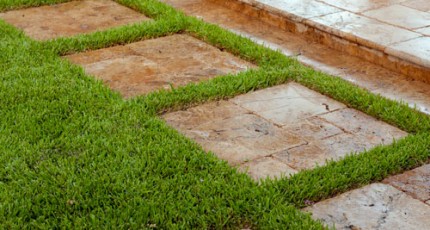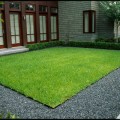Landscape Management

Landscape management is a service that higher end businesses cannot do without. Many facilities that depend on visual presentation for brand positioning require a higher level of landscaping service than those typically rendered in the average office park. In addition to mowing, trimming, and mulching, landscape maintenance professionals deliver a variety of custom services specific to that facility’s unique commercial landscaping design. The purpose of these services is to generate a sublime impact on the mind of the viewer and create a magnetic appeal that draws customers toward the facility.
Lawn care is, of course, the most commonly rendered service in a landscape management agreement. Lawn areas around high-end facilities are often found in locations that make them stand out and catch the eye. Fountains, corporate art, courtyards, and public seating areas are frequently located in these places as well. Lawn cutting services must be followed by rigorous cleanup in order to ensure that these areas remain free of debris. Any ornamental vegetation around these areas should be trimmed thoroughly so that surface areas remain clearly visible at all times.
Another vital component of a commercial landscape maintenance agreement is pruning. Shrubs around buildings require almost as much attention as lawn grass. Shrubs contribute essential vertical impact that helps make a building stand out. They also reflect its geometry. Shrubs may take on a variety of shapes, ranging from flat along the top, to a slender elegance that rises several feet into the air. These have to be maintained through ongoing landscape management so that the structures they accent are given the proper respect they deserve. Because many of these commercial landscapes feature highly eclectic designs, it is important that landscaping maintenance crews treat each species of shrub as a unique landscape element that deserves custom pruning according to its particular growth cycle.
Special attention must also be paid to any trees that grow on the property. Smaller trees often need more attention than larger ones because they often exist as single elements around which special areas of interest are centered. Tree islands, which are common in contemporary and modern landscapes, often feature a blend of ornamental grass and ground covers around the base of the tree. These plantings may require manual weeding and trimming to maintain a neat, minimalist aesthetic that is essential to these forms of design. This is just one example of how landscape management agreements are often customized with line item details that are unique to the particular commercial property on which we are working.
Garden areas should be mulched and weeded at intervals which are appropriate to the species of plants that grow in the garden. Gardens around front building entrances should also be maintained with rigorous irrigation and fertilization programs. This keeps garden plants vibrant throughout the year and prevents large, unsightly patches of soil from forming between the plants. Concealed drains must quickly move water away from these areas so that garden soil does not erode. Flowering plants should also be routinely inspected for dead blooms that can ruin the aesthetic if they are not removed from the plant after they wither.
Finally, landscape management plans should include services that maintain special features on the landscape that are vital to human appeal, comfort, and transit. Water features should be kept clean at all times. Transit areas should be routinely cleared of overgrowth and debris. Hardscapes should also be inspected for surface cracks so that cost-effective repairs before any damages compound in severity.





